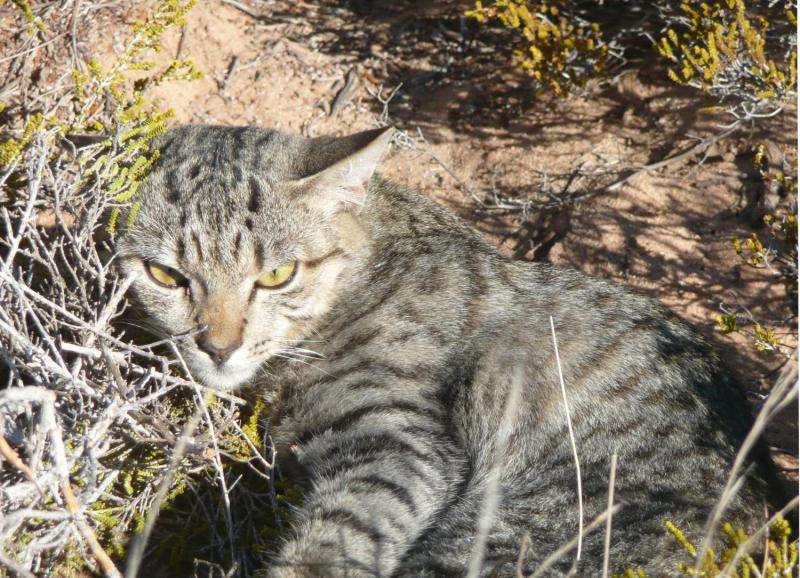Where did Australian cats come from?

Researchers have found that cats in Australia are most likely descended from those brought by European settlers. Feral cats found on the islands surrounding Australia may represent founding populations from Europe, introduced in the 19th century, according to research published in open access journal BMC Evolutionary Biology. Identifying the timing of the founding of these cat populations increases our knowledge of the effects this invasive species had when introduced to Australia.
Feral cats (cats that are free-living and independent of humans, but are descended from those that did rely on humans) have established invasive populations over large geographic areas of Australia. There has been much debate about how they arrived in Australia. Cats were often transported on sailing vessels as a means of controlling rodents or as pets, initially on board and then in new settlements. One theory suggests that cats arrived in Australia with European explorers in the late 18th century. Another hypothesis is that cats accompanied Malaysian trepangers - fishers of sea cucumbers - to Northern Australia in around 1650.
Researchers from the Senckenberg Biodiversity and Climate Research Centre (BiK-F) and the University of Koblenz-Landau, Germany analyzed mitochondrial DNA and microsatellites - short repeating sequences of DNA - from 266 Australian feral cats to explore their evolutionary history and dispersal patterns. Samples were analyzed from six mainland and seven island locations (details of islands listed in paper). The analysis found that the most probable primary source of feral cats in Australia is from cats arriving from Europe in the 19th century. There was evidence of a secondary introduction from Southeast Asia, although there was no evidence of a stable feral cat population originating solely from Asia, which discounts the theory on Malaysian trepangers.
The transportation of a species from their native habitat to a new location can have a damaging effect on the new environment, impacting on native species by predation, competition for food, or spreading disease. Two of the 22 invasive mammalian species found in Australia - European red fox and domestic cat - are predators. Over 100 native species of Australia are currently threatened by feral cats and previous efforts to reintroduce threatened species into parts of Australia have often been unsuccessful due to predation by these cats.
Katrin Koch, lead author from the BiK-F, said: "The analysis of genetic structure and diversity of Australian feral cat populations answered the question of the time of feral cat introduction to Australia and revealed that remnants of the historically introduced cat genotypes are still discernable on isolated islands. These findings have implications for invasive species management, since our study determined a specific time frame for the arrival of cats to Australia, allowing us to link the time of introduction with the decline and extinction of several native species."
More information: K. Koch et al. A voyage to Terra Australis: human-mediated dispersal of cats, BMC Evolutionary Biology (2015). DOI: 10.1186/s12862-015-0542-7
Journal information: BMC Evolutionary Biology
Provided by BioMed Central


















